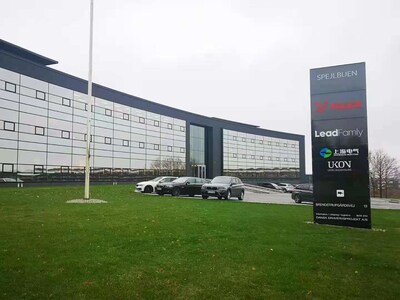Shanghai Electric Advances Wind Energy Technology with Innovative Blade Roughness Estimation Method by Senior Expert Koji Fukami
- None.
- None.
ROSKILDE,
At the 5th International Symposium on Leading Edge Erosion of Wind Turbine Blades the Technical University of
"There's a crucial need to bridge academia and the wind energy industry, looking for more practical, time-efficient, and cost-effective methods to assess and optimize blade designs under harsh conditions," Koji Fukami stated.
Wind turbine blades play a critical role in the effectiveness of wind power generation, with their integrity directly affecting the system's productivity. Erosion, especially from wind force, is a frequent issue. The industry acknowledges rain erosion as the main culprit behind damage to the blades' leading edges.
Megawatt-class blades operate at tip speeds exceeding 90m/s where raindrops can hit with significant force akin to bullets causing substantial tearing forces. This repetitive impact leads to fatigue processes where coatings peel off under continuous hits and lateral tearing forces resulting in protective layer damage eventually compromising the entire leading-edge protective structure.
In designing blades and airfoils for real-world operation, addressing the influence of severe environmental conditions is imperative for robust performance. The new approach presented enables precise simulation for blade design with a reduction in computational demand, making the design process faster, less costly, and more functional. This cutting-edge modeling method plays a crucial role in securing the robustness and dependability of wind turbine blades in electrical wind power as they confront more extreme climatic challenges.
This method employs concepts from unsteady aerodynamics to optimize airfoil designs, drawing on simulation results that reflect real operational conditions. The high degree of alignment between the simulation data from this method and the experimental data publicly released by the University of
This coming November, the Center will initiate a new round of collaboration with the Technical University of
The Center, founded in March 2019, has capitalized on
Rapidly evolving from a startup in a single office to a modern science and innovation center with a significant employee base, the Center has to date achieved a range of successes in technology innovation projects and acquired numerous patents. These advancements are being progressively utilized to empower advancements in control algorithms, load analysis, blade design, and the optimization of wind farms.
For more information, please visit https://www.shanghai-electric.com/listed_en/windpower/.
![]() View original content to download multimedia:https://www.prnewswire.com/news-releases/shanghai-electric-advances-wind-energy-technology-with-innovative-blade-roughness-estimation-method-by-senior-expert-koji-fukami-302099730.html
View original content to download multimedia:https://www.prnewswire.com/news-releases/shanghai-electric-advances-wind-energy-technology-with-innovative-blade-roughness-estimation-method-by-senior-expert-koji-fukami-302099730.html
SOURCE Shanghai Electric









